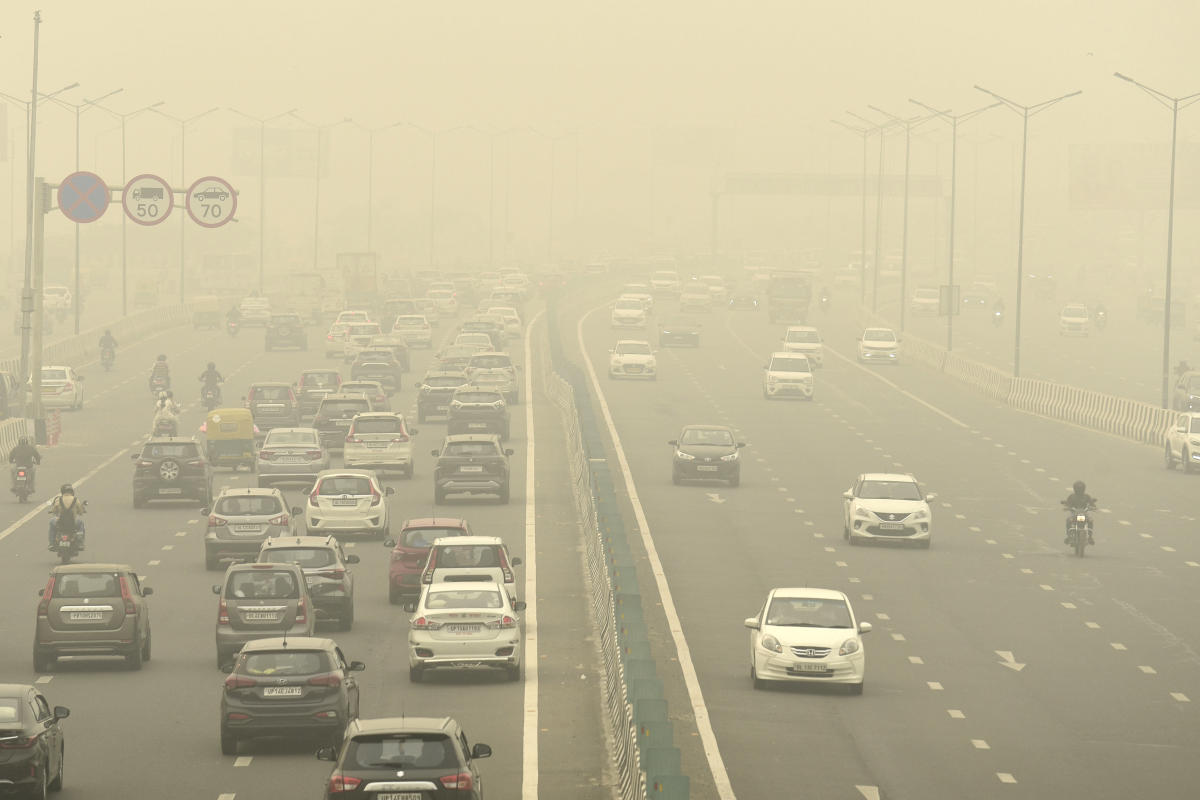New Delhi’s government has implemented measures to combat the severe haze and smog that engulfs the city during this season. In an effort to reduce respiratory problems and improve air quality, primary schools have been closed, polluting vehicles have been banned, and construction work has been halted.
Authorities are taking various steps to control the haze, including deploying water sprinklers and anti-smog guns. Many residents are also using masks to protect themselves from the high levels of air pollution.
To discourage the use of vehicles that contribute to smog, the city government has announced a fine of 20,000 rupees for drivers operating gasoline and diesel cars, buses, and trucks that are over 10 to 15 years old.
The air quality index in New Delhi has reached “severe” levels, exceeding the global safety threshold by more than 10 times. This level of pollution can lead to respiratory infections, bronchitis, and asthma attacks.
Health experts are advising people to wear masks and avoid outdoor activities such as morning walks and jogging. They warn that the polluted air can trigger various health problems, including uncontrollable blood pressure and diabetic issues.
Visitors to New Delhi, especially those who have recently recovered from COVID-19, are experiencing the harmful effects of the polluted air. Severe headaches and other respiratory symptoms are common among individuals who have been exposed to the unhealthy air.
The current state of air pollution in New Delhi raises questions about the city’s image and reputation. Visitors like Ritesh Kumar wonder what message this polluted environment sends to the world.
In preparation for the upcoming Diwali festival, authorities have implemented a ban on all construction and demolition work, excluding essential projects. This move is aimed at preventing further deterioration of the smog situation.
New Delhi consistently ranks among the cities with the poorest air quality in India, especially during the winter months. The burning of crop residues in neighboring states, combined with cooler temperatures that trap the smoke, contributes significantly to the pollution in the city.
Efforts have been made to discourage farmers from burning crop remnants through cash incentives to purchase alternative machines. In northern Punjab state, the government’s initiatives have successfully reduced crop residue burning by 30%.
The burning of crop stubble accounts for 25% of the pollution in New Delhi, according to the Indian Institute of Tropical Meteorology.
Recent data from Respirer Living Sciences indicates a fluctuation in air quality over the past few years. While there was a 32% increase in tiny particles in the air between 2019 and 2020, there was a slight decrease in 2021, followed by a steady increase in 2022 and 2023.
The city’s air quality has worsened by 4.4% in the past year, with an increase in the concentration of pollutants.
For more news on climate and environment, visit https://apnews.com/climate-and-environment.


